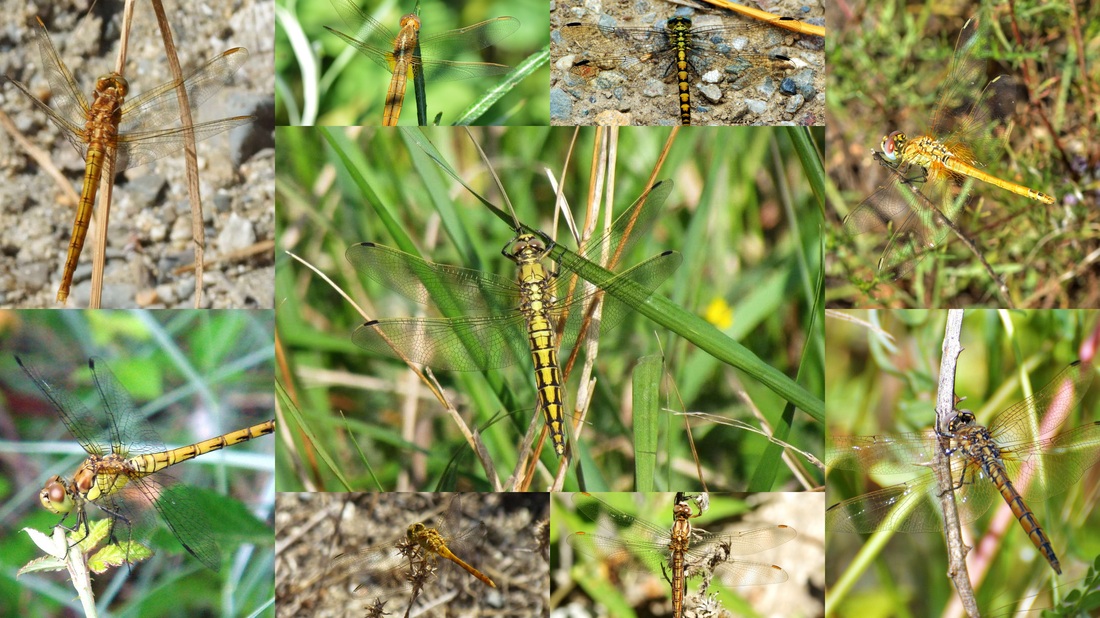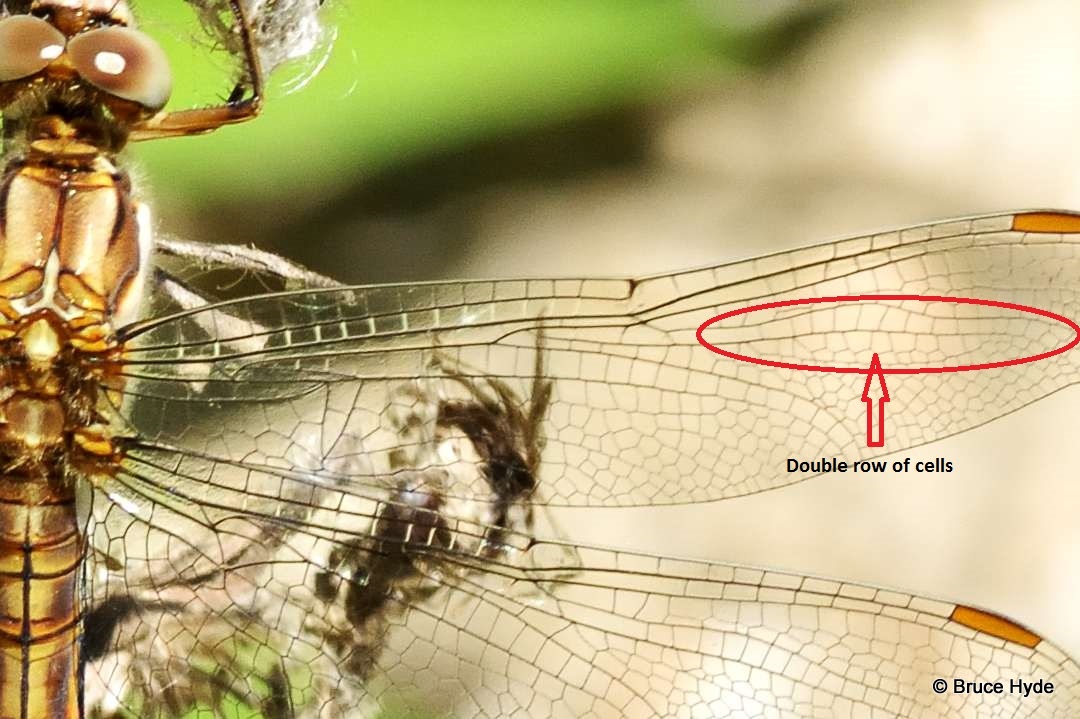Dragonflies (with a capital D) is the English word for the order of Odonata, which include dragonflies (no capital letter) and damselflies. This blog looks at a few species of similar looking dragonfly.
The life cycle, depending on species, can vary from a few weeks up to a few years. All of them spend most of their lives under water and only the final stage as flying insects. Generally the eggs are laid in or under water; the eggs hatch and turn into larvae which undergo a number of stages while feeding on aquatic insects, small fish and other dragonfly larvae. They finally emerge to shed their larval skins; after a few minutes to a few hours their wings expand, bodies harden and they take flight. They will live for a few weeks to a few months, during which time their objectives are to feed, mate, and start the new generation. It is when they fly, with their wonderful colours, that they are at their most visible and attractive.
Identifying different species can be challenging. They are not always accommodating and often fly off before one can get a decent photograph. Some species differ from their near relatives in tiny details, which makes separating them quite difficult - one has to take photographs of specific parts of their anatomy. As a dragonfly ages, its colours can change, sometimes significantly. Females of different species often look very similar - males are the 'peacocks' and usually easier to identify.
Here are some examples of the difficulty in sorting out some of the females. The descriptions are not necessarily diagnostic but are indicative, and relate what can be seen in the photos.
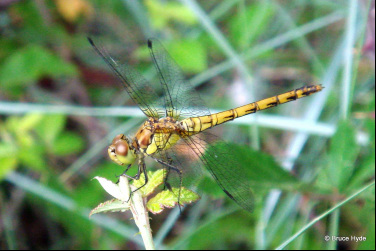 Common Darter
Common Darter The abdomen is fairly straight (no clubbed tail), the base of the wings has a small area of yellow tint, and the legs have yellow streaks. The eyes often have a greenish tinge underneath. This one is an immature female.
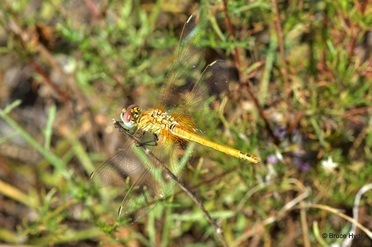 Red-veined Darter
Red-veined Darter The female's wing veins are yellow (not red), there is a yellow patch at the wing base and the underside of the eyes is blue-grey.
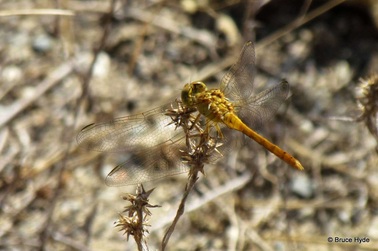 Southern Darter
Southern Darter It has smaller, paler tinges of yellow at the wing base and all-yellow legs.
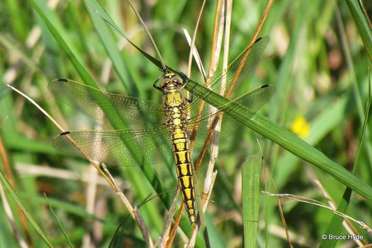 Black-tailed Skimmer
Black-tailed Skimmer It has clear wings with black pterostigmas (the black "dots" near the wing tips). The black markings are fairly robust and stand out against the yellow background of the body.
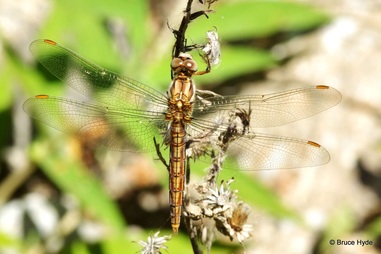 Southern Skimmer
Southern Skimmer This a fairly plain dragonfly, identified by the reddish-brown pterostigma and the arrangement of the double row of cells below a prominent single vein in the front wing, as can be seen in the photo below.
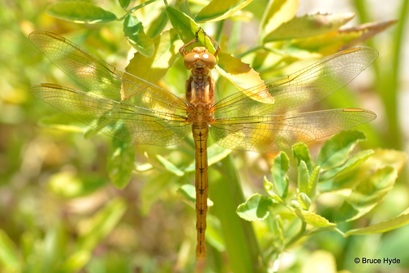 Keeled Skimmer
Keeled Skimmer What identify this species are the unusually long pterostigma and the two pale marks along the thorax (the body behind the eyes).
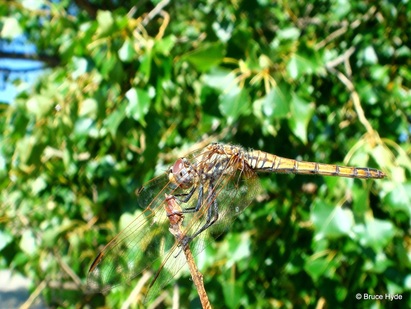 Violet Dropwing
Violet Dropwing The reason for the second part of the name is obvious from the posture; the "violet" is due to the bright colouring of the male. Other distinctive marks are an amber patch at the wing base and a prominent black bar on the top of the final segments of the tail.
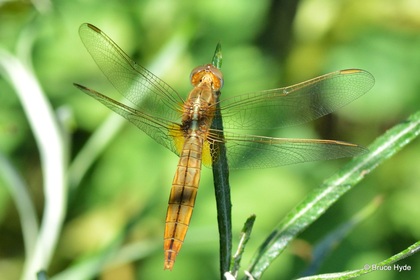 Broad Scarlet
Broad Scarlet Once again the name comes from the male which is bright scarlet. This has a plumper body than most of the others. The underneath of the eyes is blue-grey, there is a white stripe on top of the thorax and an amber patch on the wing base.
